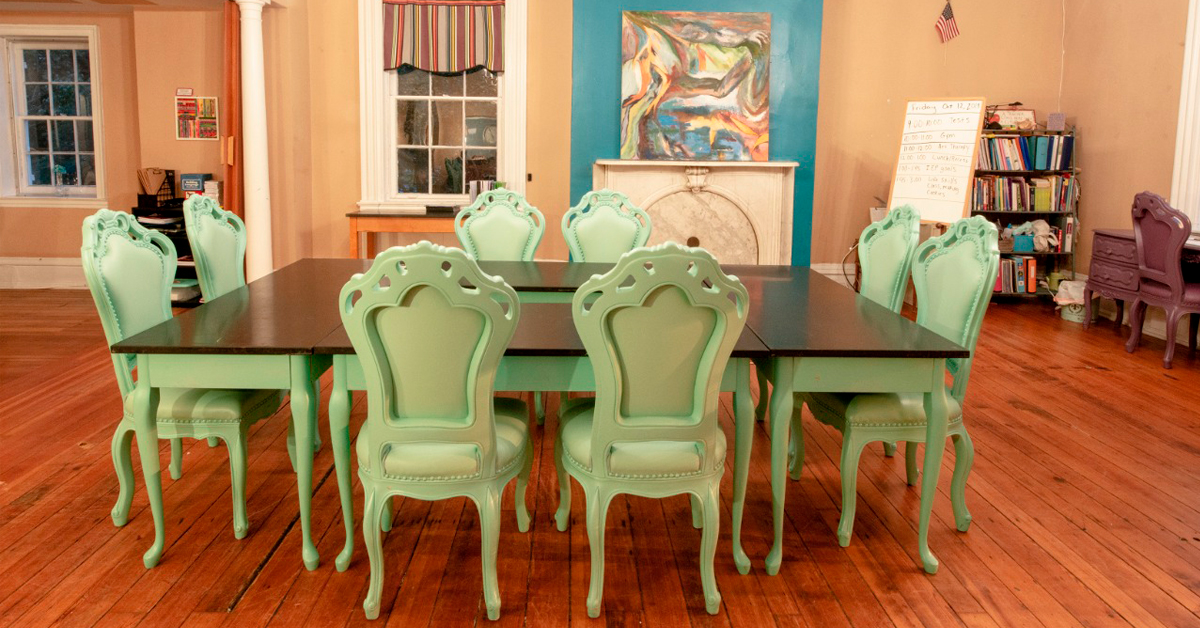The trends in interior design and architecture do not appear by chance, but respond to very specific historical and socio-cultural events that are shaping the needs, tastes and interests of users. Today we will take a brief tour through the western design trends of the last ten decades and we will explain what it was that determined the unique style of each one.
As an interior designer, your job is to recover everything that can enrich your client's lifestyle, regardless of the time. For this reason, this information will be very useful to create better timeless proposals, ready?
The 20's
The second decade of the last century was strongly influenced by the economic abundance that followed the First World War and by the Bauhaus school of design, characterized by an ostentatious geometry that combines form and functionality in designs. Being a time of bonanza and celebration, the common spaces were designed for coexistence, glamor and the exoticism of art deco.
The 30's
After a promising decade, the great powers had to face the blow of the great depression, one of the worst economic crises that humanity has seen. For this reason, during this decade design migrated to a utilitarian, sober and practical trend. Strong and durable materials - such as concrete, glass, and steel - were prioritized over expensive furnishing items, and the industrial style began to be well received, perhaps because it evoked hope for an economic revival from factories and technology.
the 40's
After the hard thirties, the Second World War caused mixed feelings: on the one hand it represented the economic salvation of the United States and the definitive impulse to what would be the American dream, and on the other hand the tension in the world situation was pushing people away to look for cozy and homely environments that could even be classified as a little corny. Flowery designs, tapestries, ruffled curtains, rugs and textile decoration in general saw their rise in this decade.
the 50's
Two phenomena marked the design trends of the fifties like no other: capitalism and the democratization of household appliances. Household chores were now directly related to state-of-the-art technology and kitchens became veritable modern factories of happiness that characterized the American dream of the suburbs, a style that was quickly adopted around the world. Appliances as decorative elements, striking colors and an air of optimism and prosperity were combined with shiny surfaces and rounded shapes that evoke futuristic scenes.
The 60's
The quintessential phenomenon that marked the direction of design in the sixties was the hippie movement, for which psychedelia, geometric and exotic designs and warm colors such as mustard, mandarin and red were imposed. At the same time, the space race led people to daydream about trips to the moon and the television in the living room displaced the kitchen as a center for family encounters. The radicalism and influence of pop culture in the design was expressed through flat furniture, practical materials and fun environments.
The 70's
The golden age of boho style and macramé. It is often said that the seventies are the “hangover” of the sixties, and that is why the bright tones faded, giving way to more terracotta and brown tones. The seventies turned to a more individualistic design and the expression of the personality became more important than the creation of familiar environments. The integration of entertainment technology begins to gain a lot of relevance.
The 80's
During the eighties, the pop culture of music, film, television and video games determined interior design with its neon lights, its bold prints, its impossible animal print and the computer designs that could now be easily replicated in textiles and tapestries of all kinds. Primary colors, straight lines, metallic accents, hippie-reminiscent gradients, and repeating patterns are heavily used.
The 90's
The teens of the eighties became adults who in the nineties prioritized stability and elegance, through a minimalist aesthetic, a more muted and calm color palette and a more elegant and less scandalous design. Grunge style and Scandinavian design appeared on the scene as signs of sophistication and fashion.
2000s
The turn of the century and the digitization that accompanied it brought with it a commitment to materials that represented a new futurism, such as stainless steel, as well as smooth, curved and minimalist lines. We witness a craze for flat things, and
g aquí...







Leave Comment